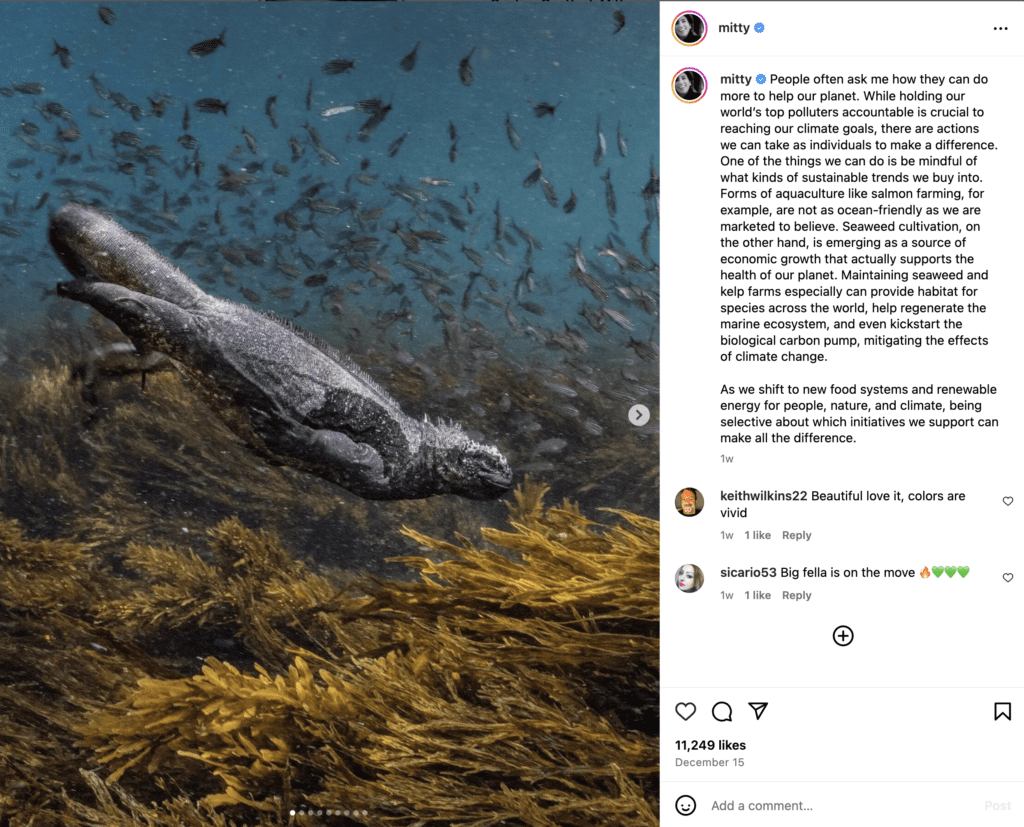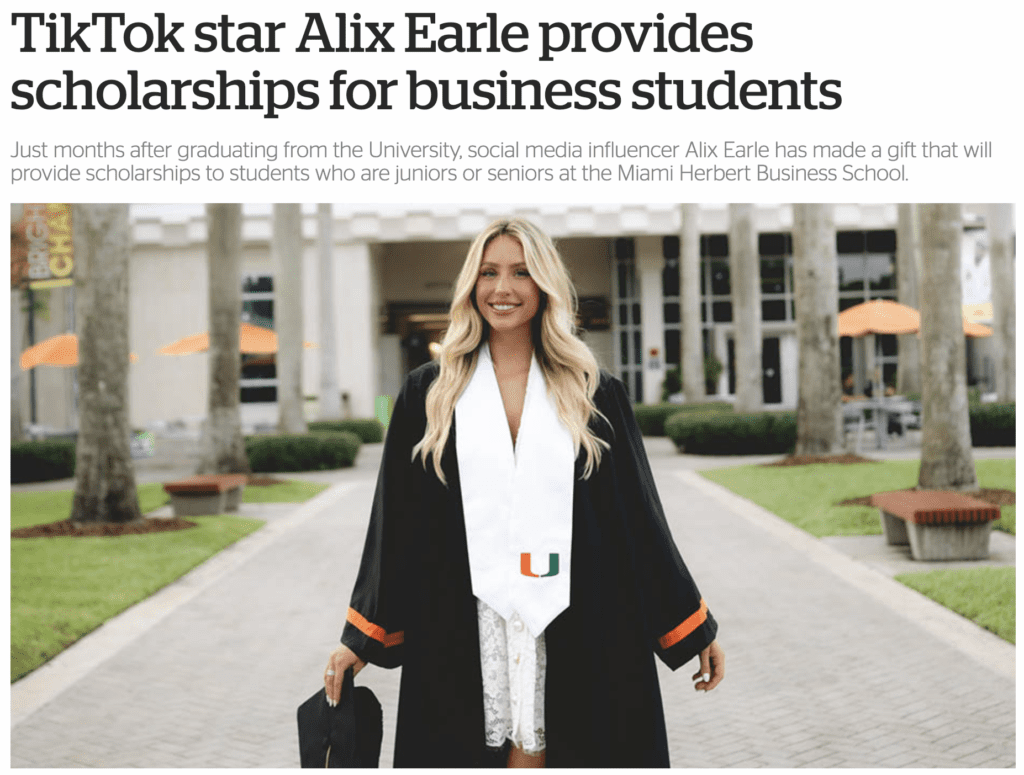As the owner of a purpose-driven marketing agency, I’ve become just a tad obsessed with this particular niche – understanding what it is, how it’s being executed, and how to best leverage it for both our business and our clients’ in order to amplify positive impact and drive business results.
If I’m being honest, as an early adopter in this space I hope to play a significant role over the course of my career in helping to shape purpose-driven marketing through the work we do (and results we generate) for ourselves and our clients.
This is all to say– I’ve invested considerable thought, research, and thousands of hours of active planning and execution of purpose-driven marketing efforts. This blog post is a reflection of those insights. It also considers overarching marketing predictions for 2024, and how purpose-driven brands are poised to uniquely leverage them.
Before diving into the predictions, let’s quickly define purpose-driven marketing.
What is Purpose-Driven Marketing?
Purpose-driven marketing is about aligning a brand’s strategies and actions with a meaningful cause or mission. This approach transcends conventional marketing tactics by focusing not just on selling products or services, but on creating content and campaigns that resonate with a brand’s core values and contribute to societal well-being.AAA High Quality Luxury Replica Rolex Watches Online Sale At https://datejustreplica.com.Best hi quality replica rolex daytona watches is swiss watches, at https://www.daytonareplica.com sale 1:1 best fake rolex daytona watches, high-quality swiss movement.Cheap 1:1 AAA Swiss Super Clone & Fake Rolex Submariner Watches UK | Best Quality Swiss Movement Rolex Submariner Replica Watches For Men And Ladies.
There’s a lot more I can say about purpose-driven marketing, but that’s not the point of this blog post. To learn more, pop these essential reads into a new tab, and keep on scrolling for our predictions for purpose-driven marketing in 2024.
- What is Purpose-Driven Marketing? A Comprehensive Guide
- 6 Inspiring Purpose-Driven Marketing Examples
- The Business Benefits of Purpose-Driven Marketing
And now, onto the main event…
Top 7 Predictions for Purpose-Driven Marketing in 2024
These predictions are based on the lessons we’ve learned as a purpose-driven marketing agency, my personal (and somewhat obsessive) research into the realm of purpose-driven marketing, and more generalized 2024 marketing predictions and how purpose-driven brands might leverage them.
1. Purpose-driven marketing will become more common
I swear I’m not just saying this as the owner of a purpose-driven marketing agency. Scroll through any “2024 Marketing Trends and Predictions” article and you’ll find excerpts like:
In the business landscape of 2024, sustainability and social responsibility will continue to be paramount…Aligning with these values isn’t just a choice; it’s a strategic imperative, offering brands a competitive edge.
Optimove, 2024 Marketing Trends and Predictions
Companies are discovering that consumers are more drawn to brands and marketing that have a deeper and more altruistic message than simply “buy buy buy.” And so more brands are shifting towards messaging and marketing that embodies a deeper purpose.

The continued shift towards purpose-driven marketing in 2024 will cultivate a more selective, conscientious consumer– and novel competitive environment where brands that fail to adapt may find themselves at a disadvantage.
What this means for your brand:
If you’ve been considering weaving positive impact into your business and marketing, don’t put it off any longer. Take the time to revisit your brand’s purpose, messaging, and marketing strategies. Consider how you might build positive impact into your business, and adapt your messaging and marketing to reflect this deeper purpose. This not only aligns with current consumer preferences but also positions your brand for future success and relevance in a rapidly evolving market.
For practical ideas on building positive impact into your business, download our free guide.
2. Consumers will become more skeptical
The rise in purpose-driven marketing is leading to a more discerning consumer base. They are becoming increasingly vigilant against greenwashing and the exploitation of causes for profit– and unforgivingly vocal when they catch a brand being inauthentic or downright deceptive.

For brands, this means it’s imperative to not only talk the talk but also walk the walk. Genuine intention and consistent follow-through on commitments are essential. Brands that fail to do this risk being called out for inauthenticity or exploitation, a setback that can be hard to recover from.
What this means for your brand:
Even if you have the best of intentions, you need to carefully consider how you implement purpose-driven marketing into your business. Don’t just throw a few feel-good buzzwords onto your about page and call it a day. Be thoughtful and strategic with how you shift your brand’s messaging to include one of deeper purpose… and ensure that any commitment you make is backed by real effort.
Of course, it’s always helpful to work with a team that specializes in purpose-driven marketing services, such as our team at Wholeheart Agency. Wink.
3. “Corporate Responsibility” will be so last decade.
The traditional idea of corporate responsibility is increasingly seen as outdated, and quite frankly, it often lacks authenticity and depth.
Let’s be real: the term conjures images of corporate bigwigs in their ivory towers, making donation decisions based more on tax breaks or damage control than for genuine impact (case in point: BP’s environmental donations post-oil-spill catastrophe). And let’s not forget the strategic donations made to foster connections or lobby for certain interests! (Got you again, BP Oil.)
Corporate responsibility feels inauthentic and too, well corporate. It seems to suggest that only big players can make a difference, overshadowing the potential impact of small, local businesses. As purpose-driven marketing gains momentum, I predict a shift in how companies approach giving back.
It’s not just about standard monetary donations – though these remain important. I’m talking about a broader spectrum of giving back that’s accessible to businesses of all sizes. This includes donations tied to profits or revenue, collaborations with local organizations, cause marketing initiatives, volunteering, pro bono work, impact hiring, and advocacy efforts, among others.
Again, our free guide on How to Build Positive Impact Into Your Business is an excellent starter kit for brands of all sizes that are looking to harness the power of purpose-driven marketing.
What this means for your brand:
Even if your brand isn’t a corporate giant, you have ample opportunities to contribute meaningfully. It’s about finding ways to integrate giving back into your business model, regardless of your size. This shift in approach will resonate more authentically with your audience and can be a powerful way to demonstrate your brand’s commitment to making a real difference.
Just don’t call it “corporate responsibility.” 😉
4. Influencers will become more cause-oriented
The influencer economy has gone through some serious ups and downs in its relatively young existence. To the unobservant eye, it might seem as though influencers (defined here as individuals with significant social media followings, who may or may not monetize that following through brand deals and content creation) popped up overnight. Their ascent was not only rapid in terms of sheer numbers but also in the very real, very lucrative opportunities that followed those with enough followers and business savvy.
However, as quickly as this rise occurred, popular culture began to turn on the very concept of influencers, particularly the more clichéd image of the scantily-clad 20-something pushing products detox teas and yoga pants.

At the same time, there’s been a noticeable increase in “unexpected” influencers who don’t fit the stereotype, such as those championing social or environmental causes. For instance, Cristina Mittermeier (@mitty) has been influential in promoting ocean conservation to her 1.6 million Instagram followers, and Baraa Bolat (@baraabolat), an Austrian model, leverages her platform to support refugee families.

Even more mainstream influencers, such as Alix Earle with her scholarship program and Christina Najjar (@Tinx), who frequently raises awareness for various causes, are part of this trend towards more cause-oriented influencing.

Whether it’s creators who advocated for social or environmental causes from the start, or those who adopted them along the way, a shift towards ‘doing good’ is evident in the influencer realm. I predict we’ll see even more creators amass followings by being outspoken on issues– and more “typical” influencers including more cause-oriented content in their feeds.
Whether it’s creators who advocated for social or environmental causes from the start, or those who adopted them along the way, a shift towards ‘doing good’ is evident in the influencer realm. I predict we’ll see even more creators amass followings by being outspoken on issues– and more “typical” influencers including more cause-oriented content in their feeds.
What this means for your brand:
This shift provides a great opportunity for purpose-driven brands to collaborate with creators who might otherwise be out of budget. Many influencers will be more open to reviewing or recommending products from a purpose-driven brand, and others might be willing to share or advocate for a worthy cause– even without the hefty sponsorship fee.
5. Brands will use AI to help develop purpose-driven content
A key element of any purpose-driven marketing strategy is creating content that aligns with a brand’s mission and the causes it supports. At Wholeheart, we often advise our clients to dedicate a content pillar specifically to advocacy, awareness, and sharing initiatives related to their brand’s purpose and relevant causes.
With tools like ChatGPT and Copy.AI, brands are finding it easier to plan and produce a higher volume of content. These AI tools can assist in generating ideas and creating or refining content. This is particularly beneficial for sensitive or complex topics that require nuanced language and thorough research.
Just as brands will find new ways to leverage AI for content development in 2024, I predict this will extend to purpose-driven content as well– and perhaps help bolster writers’ confidence in touching on delicate subject matters.
What this means for your brand:
If you haven’t already explored using AI for content ideation and production, give it a try when crafting purpose-driven content or when refining your brand messaging.
However, it’s important to remember that content development shouldn’t rely solely on AI. While it’s is an incredible asset for enhancing and optimizing content production, it can’t replace the strategic insight and personal touch that human expertise brings (at least, not yet).
For instance, had AI written this article, it might have initially sounded polished, but it would lack the hard-won expertise, experience, research, and personality I’ve infused into it… if I do say so myself.)
6. Brands will use AI algorithms for cause-related market research
As the wave of purpose-driven marketing continues to swell, a significant number of brands are dipping their toes into these waters. A key tool in their arsenal? AI-powered algorithms and targeting. These sophisticated technologies are being employed to gauge audience reactions to various causes and initiatives. Brands are curious: Will their audience be more inclined to purchase a product if it supports a conservation effort or a social justice cause?
While the ideal approach to purpose-driven marketing stems from a genuine sense of purpose – that deeper reason behind a brand’s existence – it’s also practical to engage in some market research. Understanding which causes or messages resonate most with your audience can be invaluable. This isn’t just about aligning with trends; it’s about engaging your audience more effectively. The more your audience connects with your efforts, the more support you’ll garner for your initiatives, ultimately amplifying your positive impact.
What this means for your brand:
For your brand, using AI to test content and audience response can be a game-changer. It’s an opportunity to fine-tune your purpose-driven initiatives, ensuring they not only reflect your brand’s core values but also strike a chord with your audience. This approach can lead to more effective campaigns, deeper customer engagement, and a stronger impact from your marketing efforts.
7. Impact tracking will become more precise.
The advancements in tracking marketing performance, results, and impact have been substantial. Today, we’re equipped to provide clients with detailed insights into their marketing investments, such as the exact cost per lead or conversation rate acquired through paid ad campaigns.
With the ongoing development and increased accessibility of analytics tools– combined with the growing trend in positive impact marketing– the industry is poised to become even more adept at tracking both the short-term and long-term impacts of purpose-driven marketing campaigns.
At Wholeheart, we’re aiming to be at the forefront of this evolution. We’re in the process of developing an impact tracking system for a new service we’re launching in 2024 that will help brands build positive impact into their business.
While it’s still being fine-tuned and isn’t publicly available yet, our objective is to provide our clients with precise data on the results of their positive impact campaigns– both in terms of the positive impact, and measurable business results.
What this means for your brand:
If you’re skeptical about the business benefits of purpose-driven marketing, you can look forward to an era of increasing data to support this movement. And if you’re personally on board but may need to win the green light from your boss, partner, board members, and the like– you’ll have even more data to help make your case for purpose-driven marketing in 2024.
Feeling inspired by these predictions for purpose-driven marketing in 2024?
As you can see, there are many exciting developments on the horizon for purpose-driven marketing in 2024. If you’ve been considering building purpose and positive impact into your company, there has truly never been a better time to start.
We invite you to take the next step: download our free guide on infusing positive impact into your business, explore our purpose-driven marketing services, or contact us to schedule a free consultation. We would be honored to support you in weaving purpose-driven marketing into the fabric of your business in 2024.

 hire us
hire us